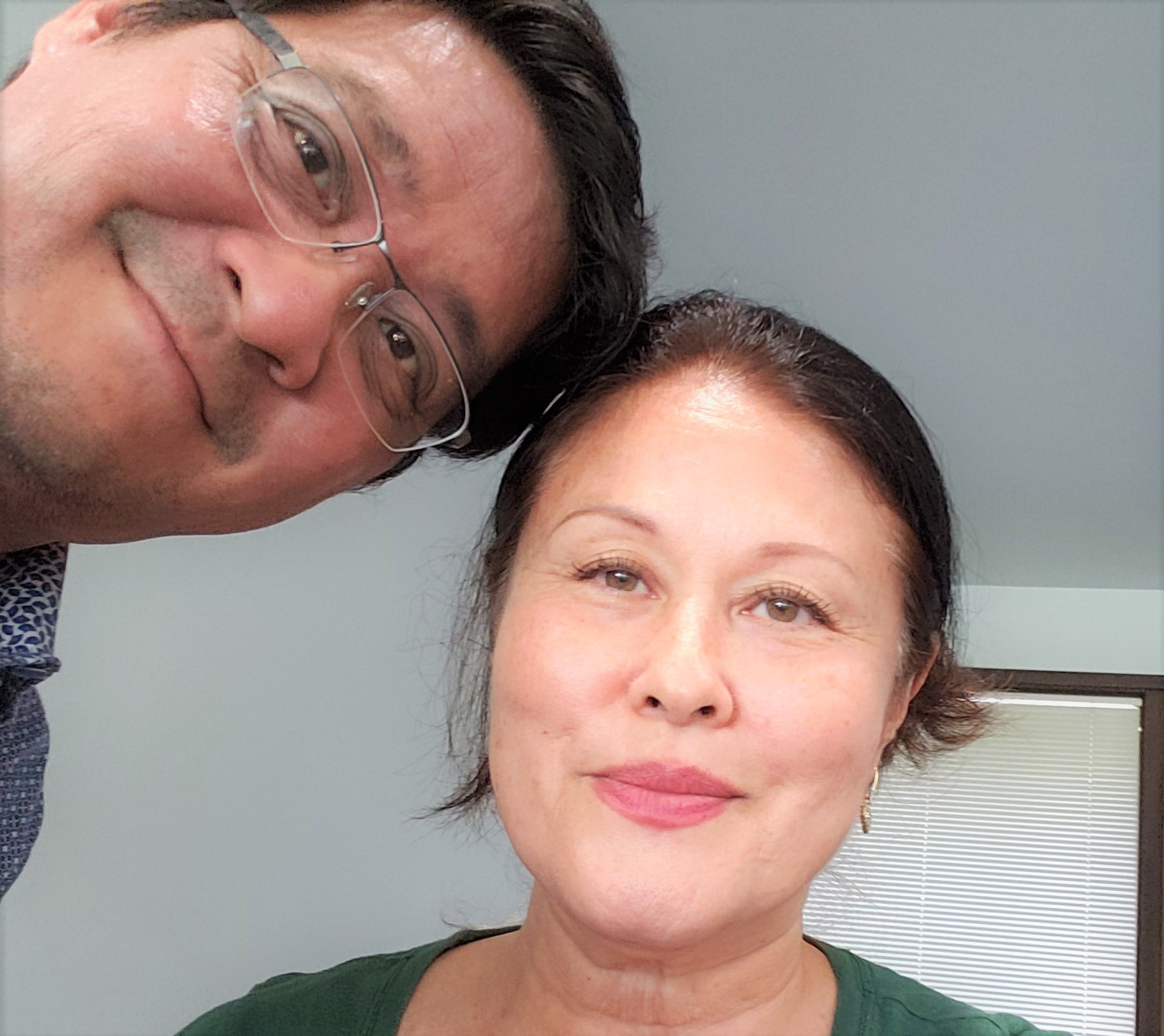Telomeres
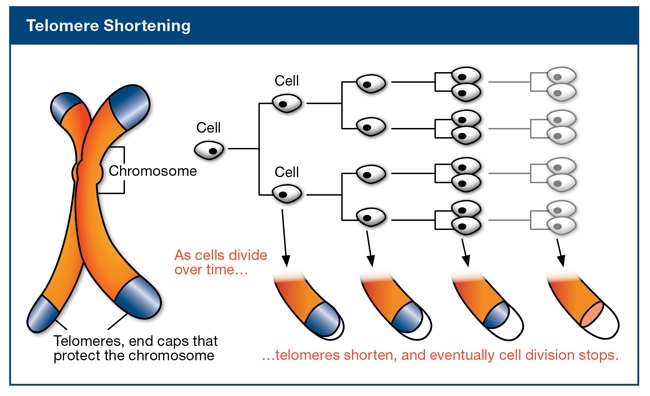
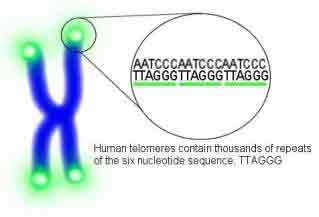 Every human cell has 46 chromosomes: 23 from mom and 23 from dad. Each chromosome is DNA library with two protective caps known as telomeres. All multicellular organisms need telomeres and even plants and fungi use them like aglets on shoelaces that prevent DNA repair enzymes from joining loose ends together.
Every human cell has 46 chromosomes: 23 from mom and 23 from dad. Each chromosome is DNA library with two protective caps known as telomeres. All multicellular organisms need telomeres and even plants and fungi use them like aglets on shoelaces that prevent DNA repair enzymes from joining loose ends together.
When any of the 92 telomeres in each human cell gets too short, those DNA repair enzymes sew chromosomes together which leads to mutation and that leads to cell dysfunction. What looks to us like many diseases, may just be one process played out in various forms. There is only one disease…with a thousand faces.
Watch one of my earliest videos about premature aging...
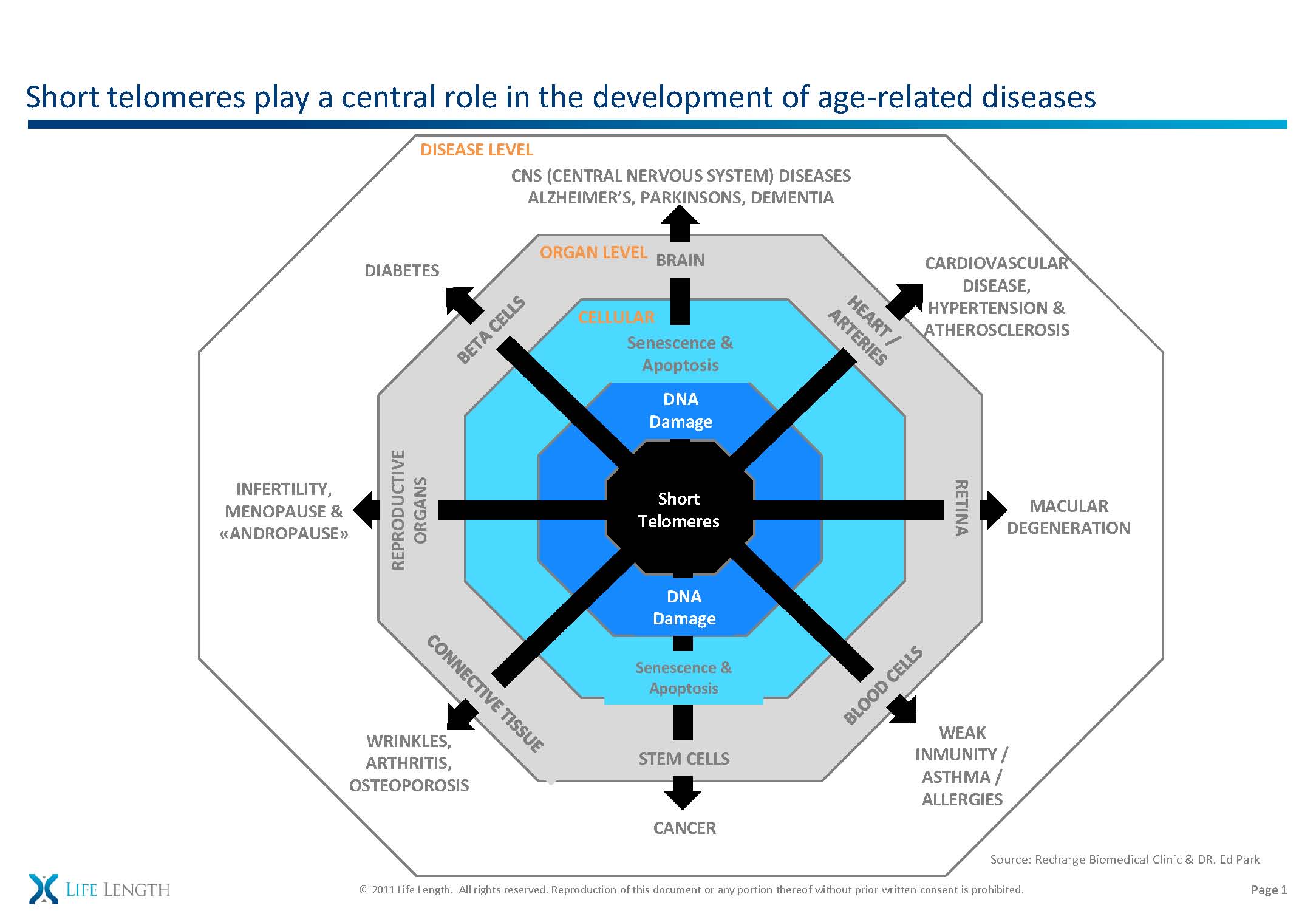
Dr. Park's Stem Cell/telomere
Theory of aging
When telomeres shorten and permit DNA damage, cells are also damaged. Because stem cells are telomerase positive, they pass on their defects for a long time to their descendants. Here is my stem cell/telomere theory of aging:
Axiom 1: Because of the mechanics of copying DNA, telomeres always grow shorter with cell divisions.
Axiom 2: Stem cells and Cancer cells (possible mutant stem cells) are capable of self-immortalizing by lengthening their telomeres with telomerase.
Corollary 2.1: telomere length in stem cells is dynamic and lengthens or shortens as a function of telomerase activation, replicative burden, and environmental effects.
Axiom 3: Differentiated, or non-stem cells cannot be younger (telomere length) or healthier (genetic integrity) than their most recent stem cell progenitor.
Corollary 3.1: Since T-cells of the cellular immune system are all stem-like in nature, a senescence of T-cells results in worsening immune function reflected in higher rates of infection and cancer
Axiom 4: For non-stem cells, which don’t produce an active form of telomerase, the Hayflick Limit is the cause of apoptosis (“programmed” cell death) and teleologically serves to protect us from rogue cell lines that have acquired dangerous changes from DNA transcription errors, erroneous splicing, and oxidative or ionizing stresses.
HYPOTHESIS: Aging is caused by the shortening of telomeres in stem cells. If the stem cells’ telomeres can be protected by telomerase activation, then the effects of aging may be slowed and possibly reversed
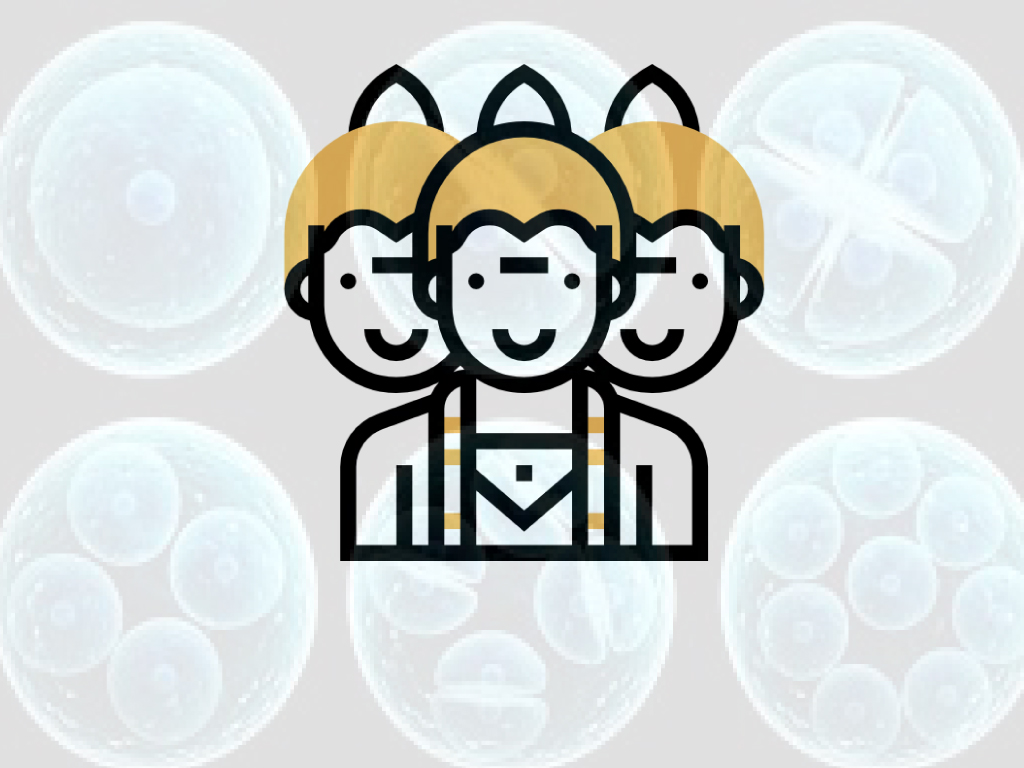
Brahma- the creator
We start life with many stem cells with high reproductive capacity. We end life with those cells depleted.
Stem cell banking from younger versions of ourselves may someday be common.
Right now, nanovesicles from a newborn placenta are the best tool we have to reawaken the regenerative capacity of our stem cells
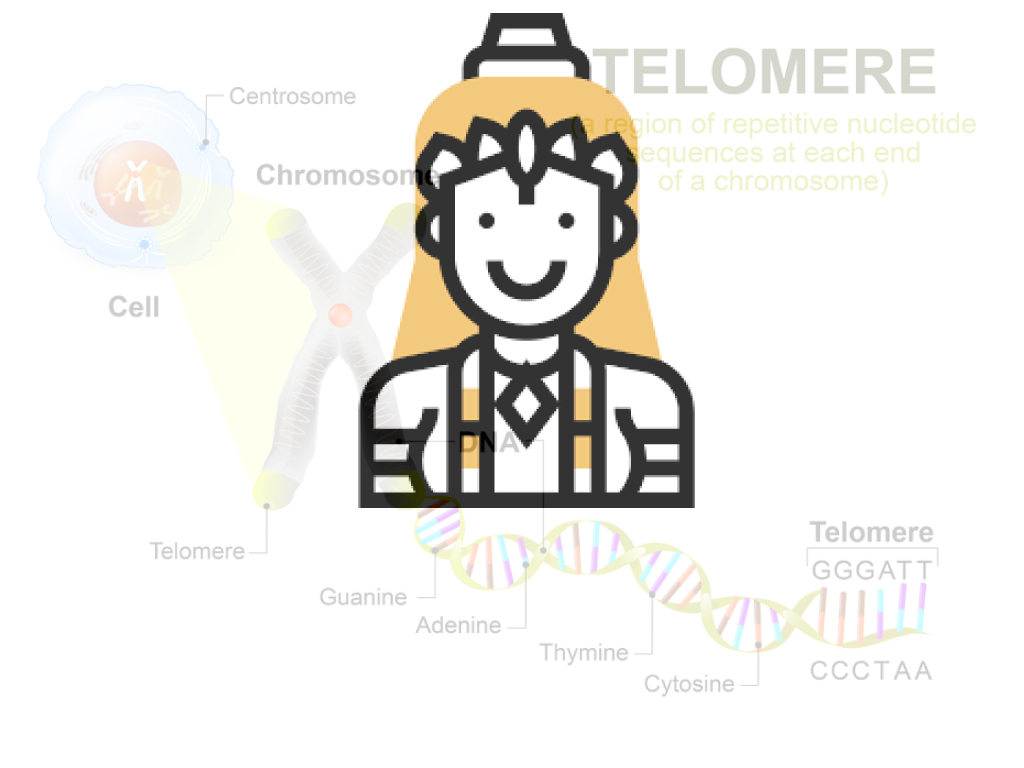
Vishnu- The Preserver
Telomerase helps cells, especially stem cells, avoid the common fate of DNA mutation that comes with living too long.
Telomerase activation is one way to preserve our youth by keeping cells from acquiring damage.
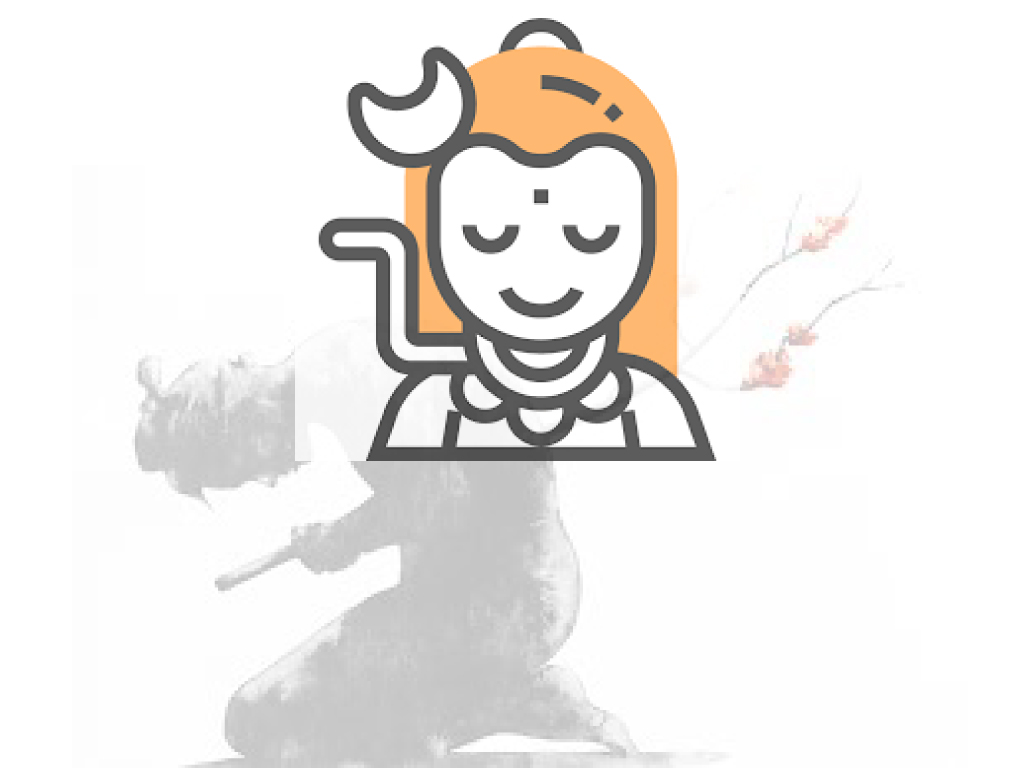
Siva- The Destroyer
Most people think of death as bad but as long as you have a mechanism for replacement, constant cell death is a normal and healthy part of staying young. Senolytics, such as Foxo4-DRI encourage already damaged cells to kill themselves.
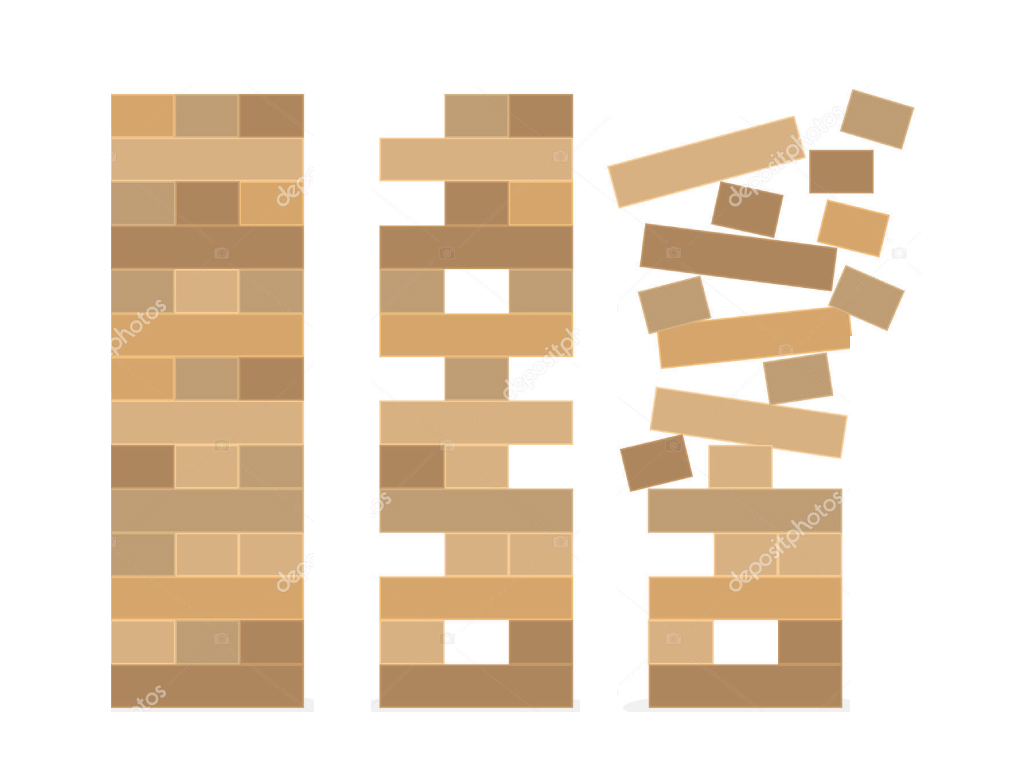
Rust never sleeps
The Fifth dimension is a concept of entropy or disorder. Atoms, molecules, cells, and organs all deteriorate as a result of oxidation, DNA errors, and altered gene expression (epigenetic silencing).
Still, there is hope! If our trinity of Siva’s destructive suicide (apoptosis), Vishnu’s telomerase preservation, and Brahma’s creation (new stem cells) are working, new and “unrusted” parts can keep any vintage car on the road for millions of miles.
The Five Dimensions of Aging
We can get older without aging
If we consider that all we are is cells and connective tissue, then it follows that we can treat our health like maintaining a classic car for millions of miles. I like the analogy of the HIndu trinity, or trimurti: Birth, maintenance, and destruction.
Some people consider time the fourth dimension and if so, there is nothing we can or would want to do about changing time.
But entropy…or disorder which takes the form of undesirable errors in our tissues, cells, DNA, and even our gene expression (epigenetics)…we should strive to limit disorder to prevent illness
Meet some of our success stories
Real people, real results
My patients are my greatest teachers
Doug Malewicki
Elane S
Karl G
Deb B
Richard S
Young P (mom)
How can I help you reclaim your health?
